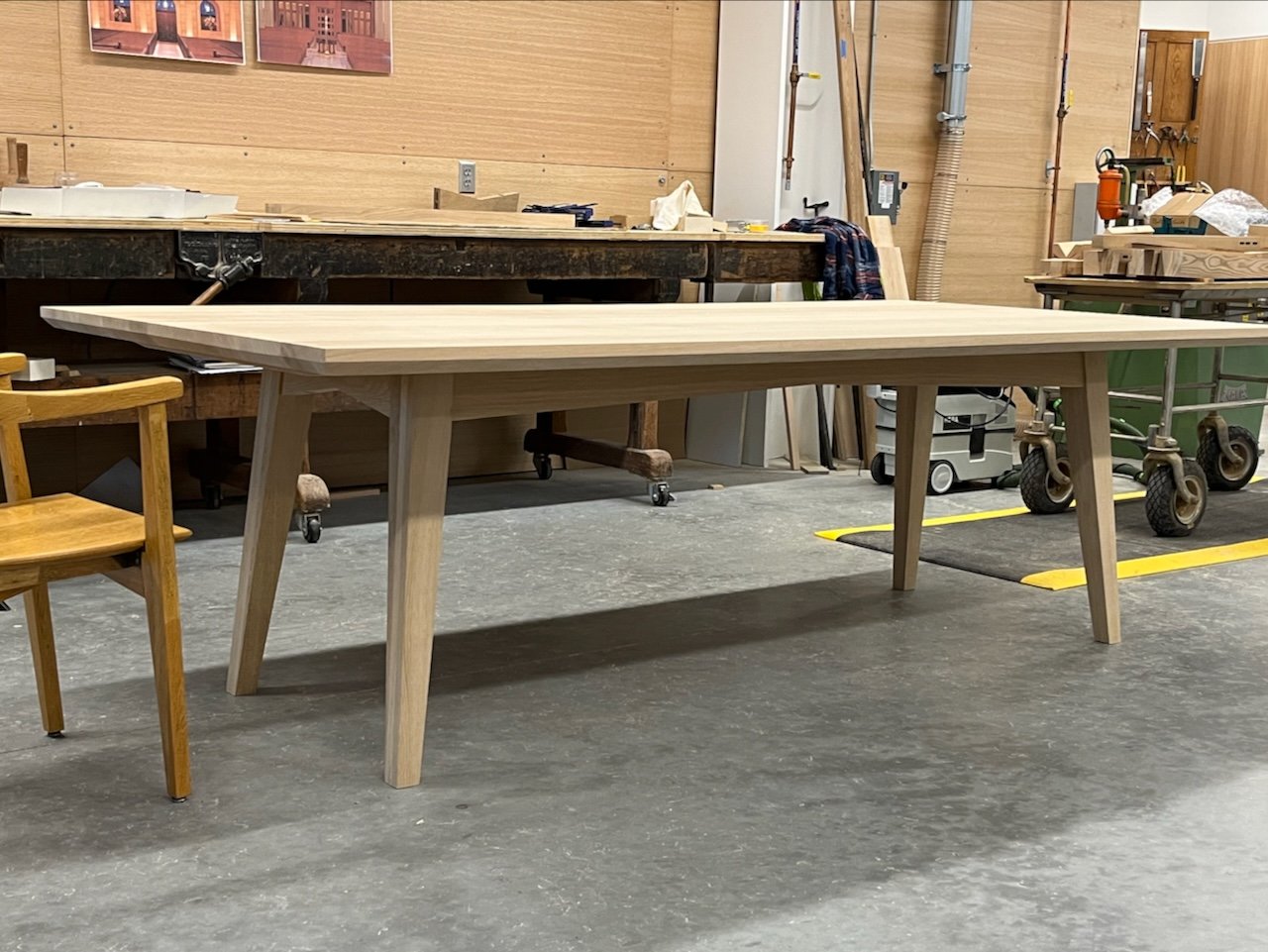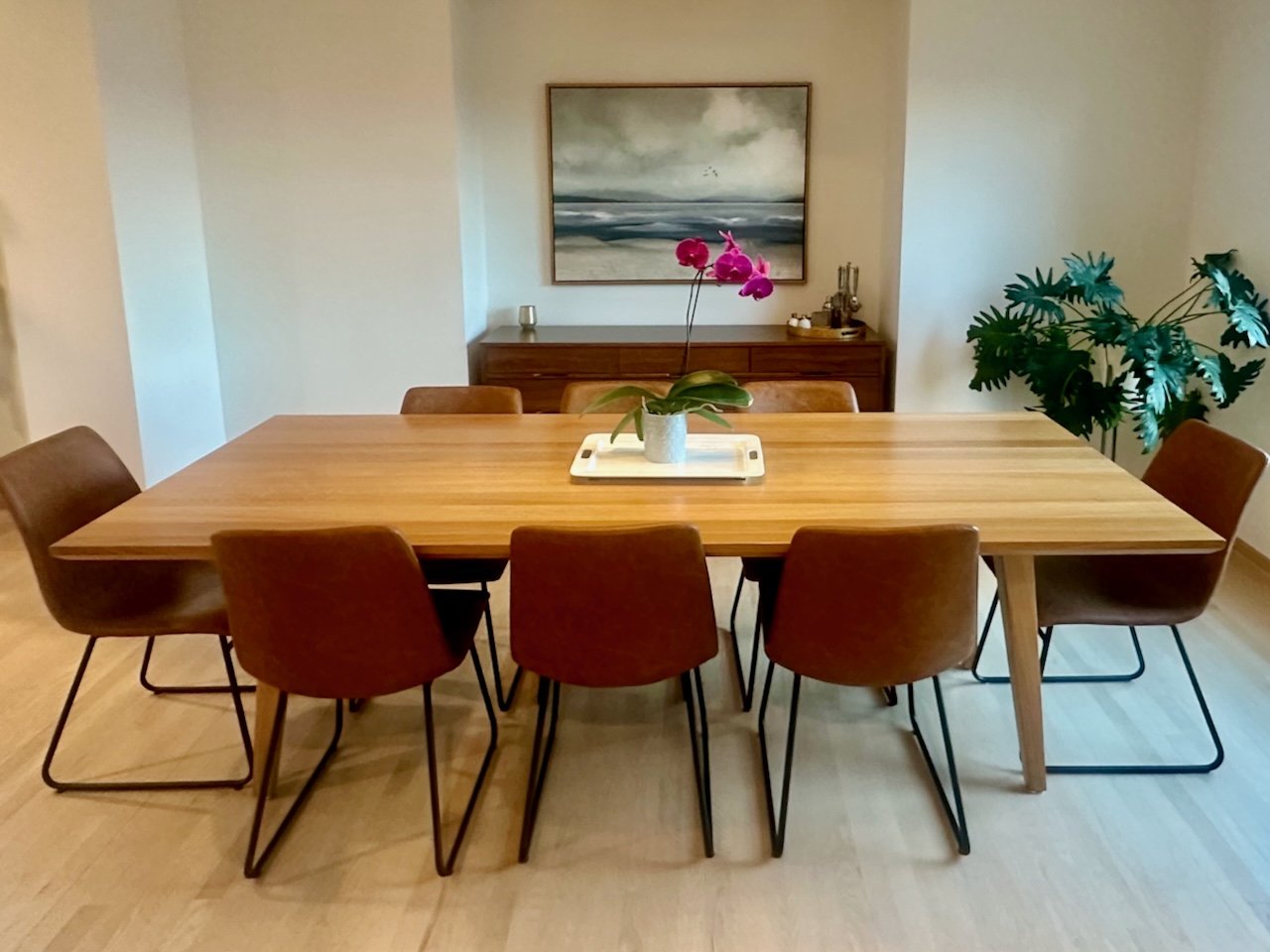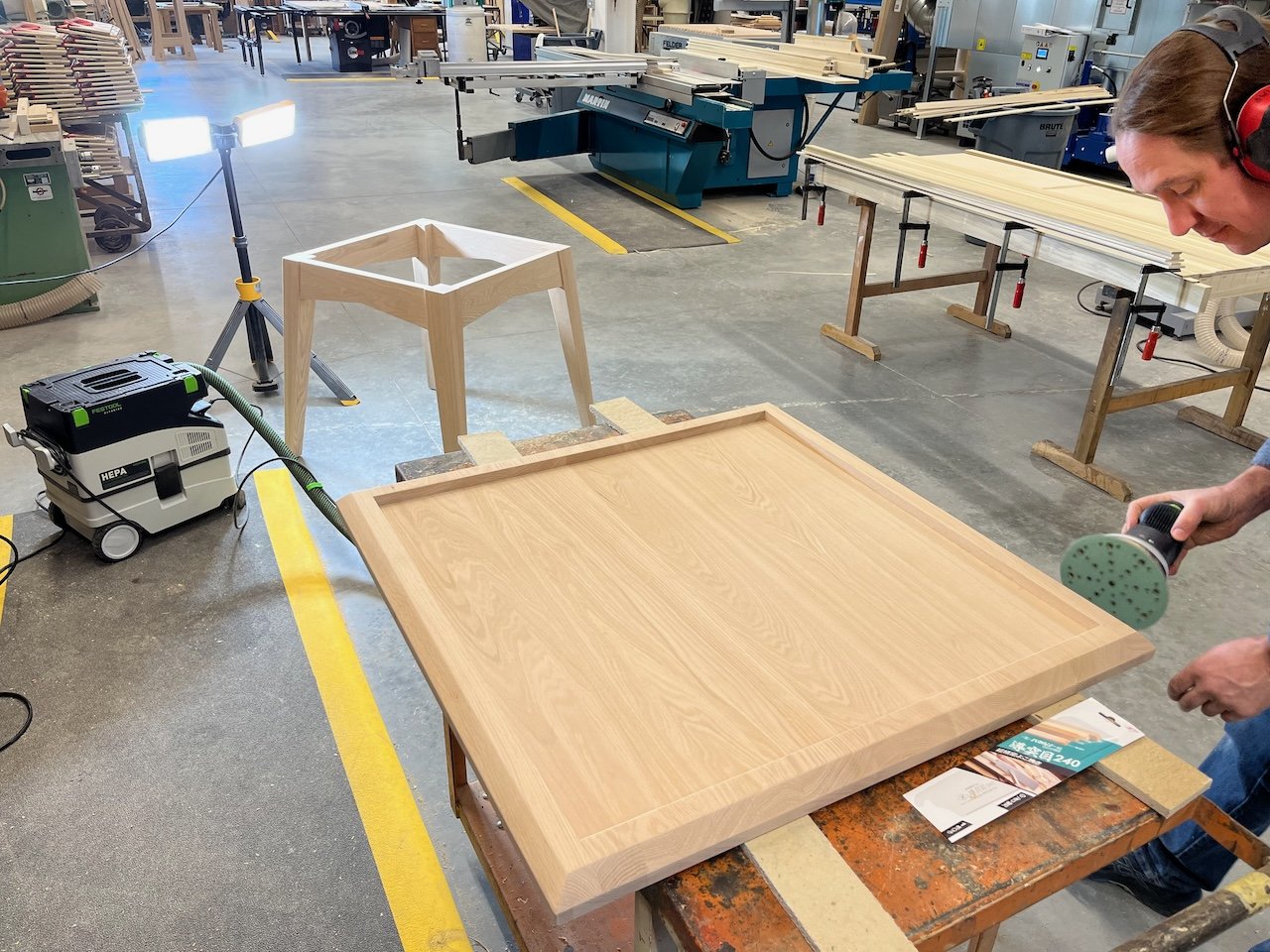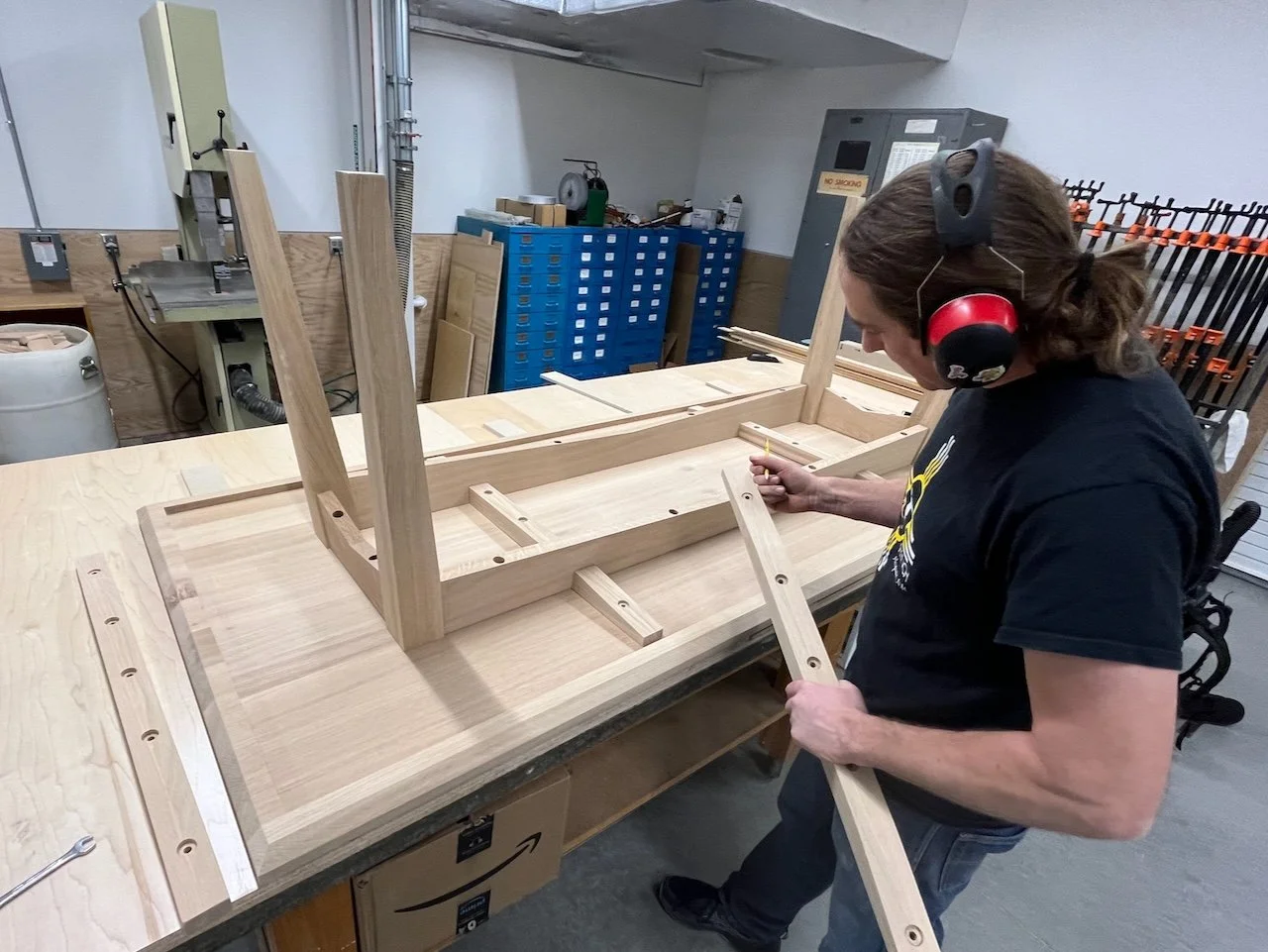Ryan Kutter, Lead Woodworker
As with music and fashion, furniture designs tend to go out of style only to come back in style years later. In the 1950s, Fr. Cloud Meinberg, O.S.B. (1914-1982) designed furniture for the Abbey Woodshop that could be found all over the Saint John’s campus. Over the ensuing decades we’ve received only a few requests to build tables and chairs designed by Fr. Cloud, but recently his furniture has reemerged in popularity, with numerous orders for tables based on his original design.
A quiet and unassuming person, Fr. Cloud was an architect by trade. He helped found the Saint John’s University Art Department and worked directly with Marcel Breuer on the design and construction of the Abbey and University Church (1958-1961). At a design conference in 1990, a chair he designed received critical acclaim by the Minneapolis Institute of Arts and has been exhibited in art galleries in Minneapolis and here at Saint John’s.
I first became acquainted with Fr. Cloud’s furniture when I came across an old table of his that was stored in the Abbey. I was intrigued by the design and built two for my own home, one to the size of the original card table that I had seen and one a little longer to fit a window seat area.
Last summer, 60 years after the table designed by Meinberg was first produced in the shop, we received multiple requests for it. Sensing a cultural comeback, we designed a set of four Meinberg tables, each of a different size, and built them using three kinds of wood (red oak, white oak and black ash).
Although you don’t readily see the base of any table when chairs (with or without people) are placed around it, the legs on this table are certainly the most distinctive feature of Fr. Cloud’s design. Working with 3" x 3" thick square legs, a matching miter (or angle) is cut at the foot and where it meets the table. Tapers are cut on the table saw with a jig, using every bit of the 3" blade height. From here on, assuming we haven't mismatched the bevels and miter cuts, we're almost done with the table! A matching angle is cut along the top of the apron to fit snugly to the tabletop, and a visually complementary angle is cut along the bottom to echo the leg tapers.
The tabletop on the Meinberg tables uses a fold-over technique, trimming a few inches from the edges and folding the cut off section over to double the thickness of the outer edge. This gives a more substantial visual weight without requiring four people to move a tabletop! When the table was near completion, a visitor asked if the four-foot-wide table was cut from a tree that large. I assured him, and you as well, that we did not cut down the only clear-grained, 300-year-old white oak at Saint John's. Instead, we glued planks together to create a woodworker’s illusion of thickness. We like to leave those giants standing in the woods.
Who knows how long this renaissance of Fr. Cloud’s work will continue. We have certainly enjoyed crafting tables that have been such a large part of Saint John’s over the decades. In any case, we will make sure to store the updated plans and jigs in a safe place for the group of woodworkers who will be in the shop during the next Fr. Cloud renaissance.
















